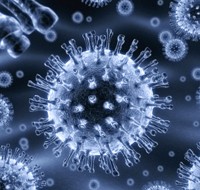The ABC's of HPV (Human Papillomavirus)

By now most readers will have heard the term "HPV". TV commercials tout "One Less", magazines talk about the Sexually Transmitted Cancer",hundreds of web sites offer advice. There's lots of info out there!
Still, in my Women's Health practice I find there is much confusion , misinformation and fear surrounding HPV and HPVrelated health issues. I hope to clarify some of these issues in this article.
- What is HPV?
- How common is HPV?
- How do you get HPV?
- How do I know if I have HPV?
- How can HPV be prevented?
- What do I do if I learn I have HPV or an abnormal pap smear?
What is HPV?

"HPV" actually stands for a group of viruses in the 'human papillomavirus' family. The common skin wart is one type of papillomavirus. There are over 100 strains or types of papillomaviruses that infect humans. Papilomaviruses are species-specific. Humans get Human papillomaviruses and, dogs get "canine papillomaviruses".
Of the 100 or so pappilomavirus types there are 30-40 types that affect the human lower genital tract. In women this is the vagina, cervix, and vulva. (HPV also affects men including the genitals and anal area.) Of these 30-40 types, about half of these viruses can, in certain individuals go on to cause changes is the cells, also known as "dyspasia", or "precancer". A small percentage of people with dysplasia will go on to progress to cancer.
The good news is that most HPV infected women will never get dysplasia, and of those who do, with a healthy immune system, the process of progression from pre-cancer to cancer takes an average of 7 years. So this usually gives your healthcare provider plenty of time to monitor or treat you depending on your unique situation.
So that if you do develop dysplasia, you can be effectively treated so that it doesn't turn into cancer. A couple of the virus types cause "genital warts". These do not usually turn into cancer, but they can cause distress in the form of discomfort or embarrassment. These can also be treated or monitored, as they often go away on their own.
How common is HPV?
To offer sense of perspective on the prevalence of this issue. About 15% of the U.S. population-about 20 million people, are infected with this common group of sexually transmitted viruses. About half of these individuals are teens and young adults between the ages of 15-24. About 80% of sexually active women will have had the virus by the time they reach age 50. So, chances are that you or someone you know has or had had this common virus.
How do you get HPV?
HPV is an infection. It is generally acquired by sexual contact. These have been cases of HPV acquired by non-sexual contact, but this is rare. In most individuals, our immune systems effectively clear the infection, usually within 2 years of contracting the infection. In most cases there are no problems caused by the HPV virus infection, likely most people are completely unaware that they ever even had it.
How do I know if I have HPV?
If you have genital warts, you may notice one or more raised 'bumps' in the genital region. These may look like actual warts, with a roughened 'cauliflower-like' surface. However, for most women, the first indicator that they have HPV will be noted on their pap smear. The pap smear itself may note some abnormalities in the cells. Or, the healthcare provider may have run an HPV test on the pap smear material, and it may show up in this way.
How can HPV be prevented?
The only sure way to prevent HPV is to prevent exposure in the first place. Condoms, while helpful in preventing some other STI's (sexually transmitted infections), offer only minor protection from HPV. Because it is a virus, good general nutrition and stress management is important to optimize the functioning of your immune system to keep the virus in check. Some healthcare providers may recommend specific nutritional supplements to help support your immune system. The other preventative option is the HPV vaccine. Currently. There is one HPV vaccine commercially available, Gardasil. There is another, Cervarix, awaiting release. Both vaccines demonstrated high efficacy in preventing 70% of HPV. So, because there are still 30% uncovered by the vaccine, regular paps are still crucial.
What do I do if I learn I have HPV or an abnormal pap smear?
First, don't panic. As mentioned, in most cases you likely have an infection that will resolve on its own. Sometimes you will need further evaluationthis could mean more frequent follow-up pap smears, HPV testing or sometimes a test called colposcopy which is a test that uses a microscope to evaluate your genital tract. Discuss your options with a trusted healthcare provider. And as with any healthcare situation, if you aren't completely comfortable with your plan of care seek another opinion.
The Bottom Line
To sum it all up, HPV is one of many common viruses we humans are susceptible to. The good news is there is much we can do to minimize any potential negative health effects of these common viruses. While most of us will have one or more HPV infections in our lifetime, we needn't suffer serious consequences if we pay attention to prevention and screening.




